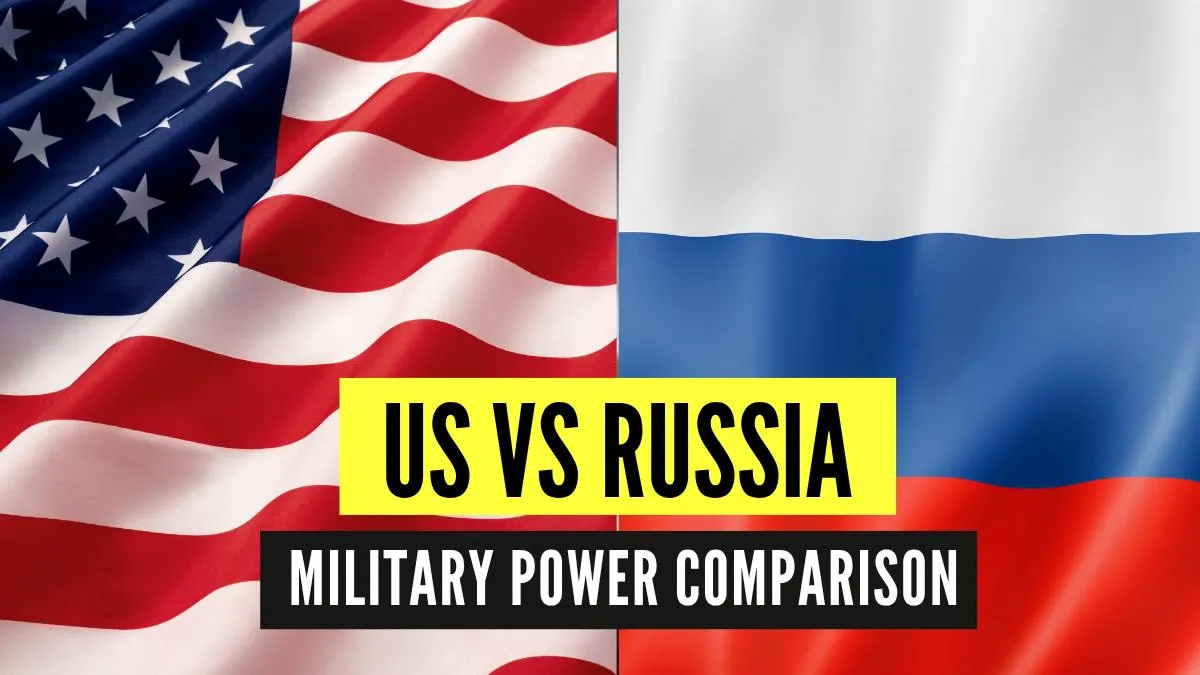The military comparison between the United States and Russia remains a central theme in global strategic discussions. Both nations are nuclear superpowers with a long history of military innovation, struggle participation, and global influence. While the US has the world's largest defense budget and unmatched global access, Russia holds a powerful army with land dominance and a focus on nuclear preventive. From advanced fighter jets and warships to cyber abilities and missile defense systems, the strengths and priorities of each country vary greatly. Understanding this comparison is important in analyzing global strength, mobility, defense strategies, and geopolitical stability. This article breaks down the military power of the US and Russia in the leading domains -air, sea, land, nuclear, and cyber - taking a wide look at how they stack up. The official data is based on the latest research by the Armed Forces EU and Global Fire Power Index.
Check Out: Empire State Building: Check Who Built it, History and Significance
Air Power
| Feature | United States | Russia |
| Total Aircraft | 13,000+ | 4,100+ |
| Fighter Jets | F-22, F-35, F-15 | Su-57, Su-35, MiG-31 |
| Drones | MQ-9 Reaper, Global Hawk | Orion, Forpost |
| Air Bases Worldwide | 800+ bases | Limited, mostly regional |
Air Force Analysis
The U.S. Air Force is the most technologically advanced and largest globally. Its fifth-generation stealth jets, like the F-22 and F-35, outperform Russia’s Su-57 in stealth and avionics. While Russia has improved its air defenses, including the S-400 and S-500 systems, it lacks the global reach and drone fleet scale of the U.S.
Naval Strength
| Feature | United States | Russia |
| Total Naval Ships | 490+ | 600+ (smaller tonnage) |
| Aircraft Carriers | 11 active | 1 (Admiral Kuznetsov) |
| Submarines | 68 (18 nuclear attack) | 58 (including ballistic & cruise missile types) |
| Naval Reach | Global (6 fleets) | Mostly regional (Northern & Pacific fleets) |
Naval Strength Analysis
The US Navy matched the unmatched blue-water capabilities with 11 nuclear-powered aircraft carriers and a huge logistics network. On the other hand, Russia depends on submarines and missile cruisers, emphasizing the anti-access/area Daniel (A2/AD) near its boundaries. It's the only aircraft carrier that suffers from maintenance issues.
Land Force
| Feature | United States | Russia |
| Active Personnel | 1.3 million | 1 million |
| Tanks | 6,200 (M1 Abrams) | 12,500 (T-72, T-80, T-90) |
| Armored Vehicles | 40,000+ | 27,000+ |
| Artillery Systems | Advanced MLRS (HIMARS) | Extensive use of rocket artillery |
Land Force Analysis
Russia has more tanks numerically, but many are older models. The U.S. excels in mobility, logistics, and precision-guided artillery. Russia emphasizes heavy firepower and has shown effective artillery and drone coordination in recent conflicts. Both armies are well-trained, but the U.S. has more overseas deployment experience.
Geography
Here is a comparison of the United States and Russia based on their geographical location.
United States
The United States covers approximately 9.8 million square kilometers, which makes it one of the largest countries in the world. Its geographical variety is striking, from the frozen landscape of Alaska to the tropical climate. The country includes the Rockies and Appalachia, huge grounds in the Midwest, a dry desert in the southwest, and mountain ranges like dense forests in the Northwest. The US enjoys excellent access to global sea routes, with the Gulf of Mexico in the south, the Atlantic Ocean in the east, and the Pacific Ocean in the west. Its diverse areas and climate support year-long military operations, comprehensive agriculture, and abundant resource extraction.
Russia
Russia is the largest country in the world, covering more than 17.1 million square kilometers and more than one-sixth of the Earth's populated land area. It extends from the Baltic Sea in the west to the Pacific Ocean in the east, and from the Arctic Ocean in the north to the hilly regions near the borders with China and Mongolia. Most regions of Russia include huge and rigid landscapes, including Siberia's frozen tundra, broad Taiga forest, rugged mountains, and wide open steppes. These geographical features, offering rich natural resources, face important challenges in terms of access, infrastructure, and population distribution.
Natural Resources
United States
The United States is rich in a wide range of natural resources that fuel its economy and support its global impact. It is one of the top producers in the world of oil and natural gas, which is due to advanced drilling techniques such as hydraulic fracturing and horizontal drilling. The U.S. also has enough coal reserves, which makes it a long-term energy source. Beyond fossil fuels, the country has important deposits of rare earth elements used in copper, gold, iron ore, electronics, and defense technology. The U.S continuously manages forests and is a major manufacturer of wood and paper products.
Russia
Russia is one of the most resource-rich countries in the world, with vast reserves that play a central role in its economy and global strategy. It holds some of the largest proven reserves of natural gas and oil, most of which are located in Siberia and the Arctic regions. These energy exports are important for the economic stability of Russia and especially serve as a powerful geopolitical tool in its behavior with Europe and Asia. The country is also a major supplier of coal and ranks among the top producers of major industrial and strategic minerals such as nickel, uranium, palladium, and aluminum. Russia's broad boreal forests provide huge wooden resources, although most of the land remains underdeveloped due to the cold climate and limited infrastructure.
